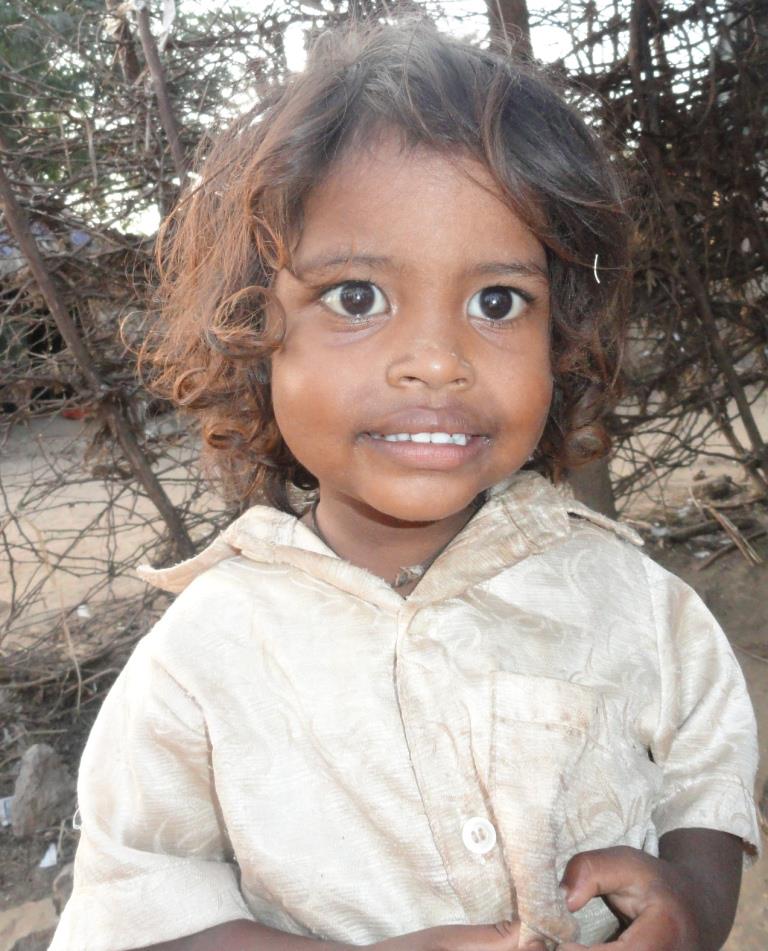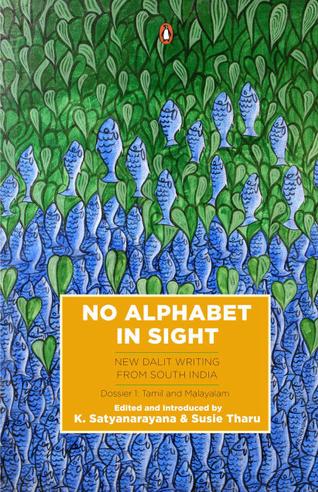Karthik Navayan
I don’t know
Whether it is athiesm or animism
But I am the Adi Dalit
Who first excommunicated Brahmanvad.
— from the Telugu poem ‘Yanadonni‘ by G.V. Ratnakar.
~~~

In 2006, Thupakula Munemma, a Yanadi tribeswoman in Nellore district, received a parcel from the local Revenue Divisional Officer through post. Munemma was an activist of ARD, or Association for Rural Development, a social service organization based in Gudur of SPS Nellore District where the population of Yanadi tribe is large. ARD worked in the area of child rights and development, and mainstreamed several orphan children who were found on the streets and railway stations, by providing them with education and health facilities.
In 2005, after the tsunami, ARD had conducted a baseline survey in the villages. In this baseline survey, it was found that no Yanadi family owned land in the villages surveyed. Next year, when Munemma, received the parcel from the RDO, she brought it to the notice of Mr. Basheer Shaik, the Director of ARD. The parcel contained land documents which showed that some Yanadi families held Assigned [1] and CJFS (Community Joint Farming Societies) [2] lands.
 In the baseline survey, ARD found that the Yanadi families own no lands, but the documents received from the RDO showed that they had been assigned some government lands. Then the ARD Director, Mr. Basheer Shaik, started verifying the land documents. He also obtained other land related documents from the district administration and conducted a thorough study. Through this study he came to the conclusion that vast tracts of government lands were encroached upon by the local land mafia.
In the baseline survey, ARD found that the Yanadi families own no lands, but the documents received from the RDO showed that they had been assigned some government lands. Then the ARD Director, Mr. Basheer Shaik, started verifying the land documents. He also obtained other land related documents from the district administration and conducted a thorough study. Through this study he came to the conclusion that vast tracts of government lands were encroached upon by the local land mafia.
The parcel which contained the Land documents actually reached Munemma by mistake. What usually happens in the lower Revenue Administration is that, they never allow access to poor Yanadi people to their land records; they help the land encroachers by taking bribes; most of the lands that were assigned to Yanadi families in SPS Nellore District were encroached upon by Reddies [3], the dominant landlord caste in Andhra Pradesh.
And that is how the struggle was born.
Yanadis, the Adi Dalits
The Yanadis are an oppressed, pre-dravidian tribe who are found mostly in SPS Nellore and Chittoor districts in Andhra Pradesh, and in some pockets in neighbouring districts. They are divided into two groups: the Manchi Yanadi, who belong to the Small Superior class; and the Challa Yanadi. The Government enlisted them in the Scheduled Tribes category. Their main occupation, apart from fishing and hunting, is domestic work like cleaning which is considered a menial job; some among them still lead a semi-nomadic existence. They have been denied opportunities both in education and employment. This fact, which is supported by a lot of statistical evidence, is viewed as a problem that needs to be addressed. Although there are several organizations, both Government and Christian, working among them, their contribution towards the Yanadis’ uplift has been minimal.

This land struggle pitted such a marginalized community against the dominant Reddy land grabbers.
According to an unofficial study (conducted by ARD), 1,27,000 acres of land assigned to landless Yanadis was encroached upon in SPS Nellore District by the local land mafia, most of whom belong to the feudal Reddy community. While ARD is working for the empowerment and rights of the Yanadi community, they were compelled to also look in to the issue of Yanadis’ assigned lands as it is land which decides the economic and social status of rural Indians. So they started concentrating on the land rights issues of the Yanadi Community.
How the land rights movement started
 After coming to know that the Yanadi Families hold land titles in their names (with many among them not even aware that the Government had Assigned, or granted them land), the Director of ARD started working on the land documents, and organized training for ARD staff on how to verify land documents; all the staff of ARD were trained in verifying nine important, and necessary, land related documents and this played an important role in the land struggle. The documents are:
After coming to know that the Yanadi Families hold land titles in their names (with many among them not even aware that the Government had Assigned, or granted them land), the Director of ARD started working on the land documents, and organized training for ARD staff on how to verify land documents; all the staff of ARD were trained in verifying nine important, and necessary, land related documents and this played an important role in the land struggle. The documents are:
1. Computerized Adangal for F.1420,
2. 1-B Register (Manual as well as Computerized),
3. Diglot (Scanned Copy) [4],
4. Village Map (Vectorized with colours to depict various classifications of lands),
5. Govt. Land Register (Account No.1) – (Prepared from LRMIS or Land Records Maintenance Information System),
6. Assignment Land Register (Manual as well as LRMIS based),
7. CJFS Land Register (Manual as well as LRMIS based),
8. Key-Register,
9. Water Tax Arrears Register (based on Jamabandi Accounts).
After thorough training in examining land records, the ARD activists, 14 in all, started carrying all relevant land records the ARD Director had obtained from the District administration, to the villages they visited and verifying on the spot whether a piece of land was Government, Assigned or CJFS land, and identifying encroachers on that particular plot.
After verifying the status of a particular piece of land, the ARD activists start the process of reclaiming it on behalf of the Yanadi family who was assigned the land originally, if it is Assigned land; if it is Government land, they apply to the government to allot the particular plot to a landless Yanadi family.
The process starts with submitting a representation to the Mandal Revenue Officer by paying a fee of Rs.10 and requesting him to provide them with the No.3 Adangal/ Pahani, and then they tally it with the Copy of Adangal which they already carry and identify the Land encroachers.
After this process, they pay Rs.250 at Prajaseva Centers and request the Joint Collector to send a Surveyor to identify, formally, the particular piece of land. The surveyor usually arrives after at least 10 people have requested for the survey, and paid the required charges. After the survey, the boundaries are identified and then the land assignees pay another Rs.100 fee requesting the Mandal Revenue Officer to issue the Pattedar Pass Book/ Title Deed.

Following this process, ARD successfully helped many people from the Yanadi community to acquire their Assigned Lands. 1,359 families benefited from this movement, acquiring or reclaiming land to a total extent of 2,031.12 Acres in three Mandals and the acquisition of another 4,737.1 Acres of land by 1,832 Families in three Mandals is in progress.
But what preceded that process was several years of hard work among the Yanadis, the district administration and local political society.
Balancing Strategic Approach
The main strategist behind this land struggle is Shaik Basheer, the Director of Association for Rural Development (ARD). He evolved a balancing strategy which successfully helped the Yanadis, the real beneficiaries, in acquiring the lands assigned to them in 5 Mandals of SPS Nellore District. This strategy involved:
* Long years of motivating the Yanadi Community and raising awareness among them about their rights and entitlements.
* Fostering greater understanding towards the needs of the Yanadi Community in the District Administration which was already headed by a progressive and empathetic leadership.
* Establishing good relations with the political community, and succeeding in gaining their support.
The Role of the Administration
The top officials of the Nellore district administration– District Collector, Mr. Ravi Chandra, the Sub-Collector, Mr. Veerapandian, and the Joint Collector, Mr. Saurabh Gaur– were sensitive towards the problems of the poor Yanadi community, and supportive of the land rights work that ARD has been doing to retrieve the Yanadi families’ lands which were encroached upon by the Reddies.
ARD, led by Mr. Shaik Basheer, had catalyzed the inauguration of a unique event called ‘Revenue Sadassu’, a meeting where top district and revenue officials interact with the lay public. ‘Revenue Sadassulu’ (or public interface programmes of the Revenue officials are meetings of the Revenue officials and the general public where problems of the latter are heard and sometimes followed by immediate resolution of those problems ) were initially started in the course of ARD’s efforts to resolve the land related problems faced by the Yanadi community. Later, they became so popular that they were adopted by the State Government and implemented state-wide. This is a big achievement of ARD.
The process of computerization of land records and providing them to the ARD land rights activists brought a real change and helped many Yanadi families to get back their assigned lands. This would have been impossible without the active support of the District officials.

Challenges and Threats
There were many challenges that ARD staff had to face while working for the Yanadi lands. The land mafia, those who stand to lose the encroached lands, is threatening to kill the ARD Director and staff; and the lower cadre of Revenue Staff i.e. Village Revenue Officers and Mandal Revenue Officers and Surveyors are colluding with the land mafia in manipulating Land records.
 Apart from this, organizing the Yanadis is another challenge: the land mafia is threatening to stop offering them employment and patronage if they work with ARD to get back their lands. Yanadis are unorganized people and innocents by nature; but ARD is motivating and creating awareness among them and is organizing them to get back their assigned lands.
Apart from this, organizing the Yanadis is another challenge: the land mafia is threatening to stop offering them employment and patronage if they work with ARD to get back their lands. Yanadis are unorganized people and innocents by nature; but ARD is motivating and creating awareness among them and is organizing them to get back their assigned lands.
Though the socio-political situation is same among the SC and the STs, the land mafias are instigating Scheduled Castes against Scheduled Tribes. In Konduru village, ARD activist Koteswaramma, who is working for Yanadi Lands, identified 69.72 Acres of Government land and submitted representations to the Local Mandal Revenue Officer requesting him to allot the land to landless, poor Yanadi families. But the local Reddies instigated SCs against Yanadis and the SCs submitted another representation to the MRO to allot the same 69.72 Acres to the Scheduled Castes. And they threatened to kill ARD activist Koteswaramma, though she belongs to the same Scheduled Caste community.
In Padalapally village of Gudur Mandal, the local land mafia threatened villagers and told them not to attend the meetings organized by ARD. And Gudur MRO (Mandal Revenue Officer) insulted ARD staff by calling them rogues. In Kothapeta, one person belonging to the Reddy community, threatened to kill an ARD activist if he continued to visit the village to organize the Yanadi community.
In Nidagurthy village of Vakadu Mandal, the Yanadis have land titles and Pattedar Pass Books but they are not in possession of the land. The ARD Activist organized a meeting and represented their problems to the MRO requesting him to show the lands to the original beneficiaries. But the irritated Village Revenue Officer threatened to kill the ARD Activist if he came again with such demands.
The land mafias are threatening ARD Activists with all efforts; they are visiting homes of ARD activists and threatening their parents and relatives also. But all ARD activists are committed to work for the landless poor, and they are planning to represent these issues before the Superintendent of Police and the District Collector.
This is the success story of the land rights movement which enabled the Yanadi families to regain possession over their assigned lands which were encroached upon by the land mafia. The learning in this movement is the balancing strategy that was adopted which involved working with the help of the district administration, instead of choosing the path of political assertion.
But the struggle is still on in many villages and Mandals of the district, the threats from the dominant land owning castes still continue, the activists and the Yanadis are still fighting.

~~~
Notes
[1] Lands Assigned to Yanadi Families Under the Andhra Pradesh Lands (Prohibition of Transfer) Act 1977 (Act 9 of 1977).
[2] Community Joint Farming Societies were formed with Yanadi Families and lands were assigned in 1965 by the then District Collector of Nellore, Late Sri. S.R. Sankaran.
[3] Reddies are a social group/ caste; they are enlisted as a forward caste by the Government. They are a shudra community, in Varna terms, and over time became feudal overlords and peasant proprietors. A number of elected legislators, former chief ministers and business leaders belong to this community.
[4] A Bi-lingual Book of Land Classifications prepared by the British.
Karthik Navayan is a human rights activist.
[Pictures Courtesy: Karthik Navayan and Association for Rural Development (ARD, Gudur)]









